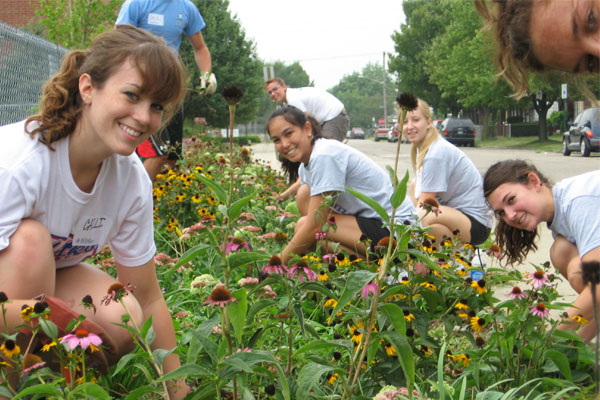Local Highlights

Indianapolis
By the numbers,
1981–2010:
- $162.2 million
- $604.1 million
- 3.8 million sq. ft.
-
5,544 (LISC)
998 (Affiliates)
6,542 (Total)
Total Investment
Dollars Leveraged
Commercial Space
Homes & Apartments

Sustainable Communities
Indianapolis LISC’s Building Sustainable Communities program operates in five target areas: Southeast, Near Eastside, Near West, Crooked Creek, and West Indianapolis. Quality-of-Life Plans have been completed for each area and are now being implemented with support from LISC. Within the first three years of implementation, the five plans have attracted more than $125 million to the neighborhoods.
Building Family Income & Wealth
Over the past three years, LISC has built a network of six Financial Opportunity Centers (known locally as Centers for Working Families) that offer three core services – employment placement and career improvement, financial education and coaching, and public benefits access – to help put families on the path to financial stability. Through 2010, the centers have provided two or more financial development services to 1,549 families.
Improving Access to Quality Education
LISC has become more involved in supporting educational programs that help shape the learning that occurs inside the classroom and out in the community. This includes a new creative writing program that works with students to get them excited about writing. LISC has also provided facility financing to 10 urban charter schools.
Expanding Investment in Real Estate
Responding to the impact of foreclosures and vacant properties, LISC collaborated with the Indianapolis Neighborhood Housing Partnership and the City to create a strategy for utilizing the City’s $29 million allocation of federal Neighborhood Stabilization Program (NSP) funds. At LISC’s urging, Mayor Ballard organized a redevelopment advisory committee that eventually chose four target areas where NSP resources will be directed; these areas overlap with the four LISC Sustainable Communities target areas.
Stimulating Economic Activity
Indianapolis LISC worked with local civic leaders to incorporate the Near Eastside Quality-of-Life Plan into the city’s successful bid for the 2012 Super Bowl. The neighborhood is now the focus of the Legacy Project, an effort by the NFL to create long-lasting, positive community impact for the host city. More than 100 civic leaders have partnered with neighborhood volunteers to advance goals related to housing development, commercial development, neighborhood promotion, and the creation of a legacy recreation center.
In addition, LISC led a commercial district revitalization program that attracted 103 new retail and service opportunities with 475 new jobs to four districts over the past three years. Community-based organizations have dedicated commercial district coordinators who assist in attracting and locating new businesses in their respective districts using LISC grant support.